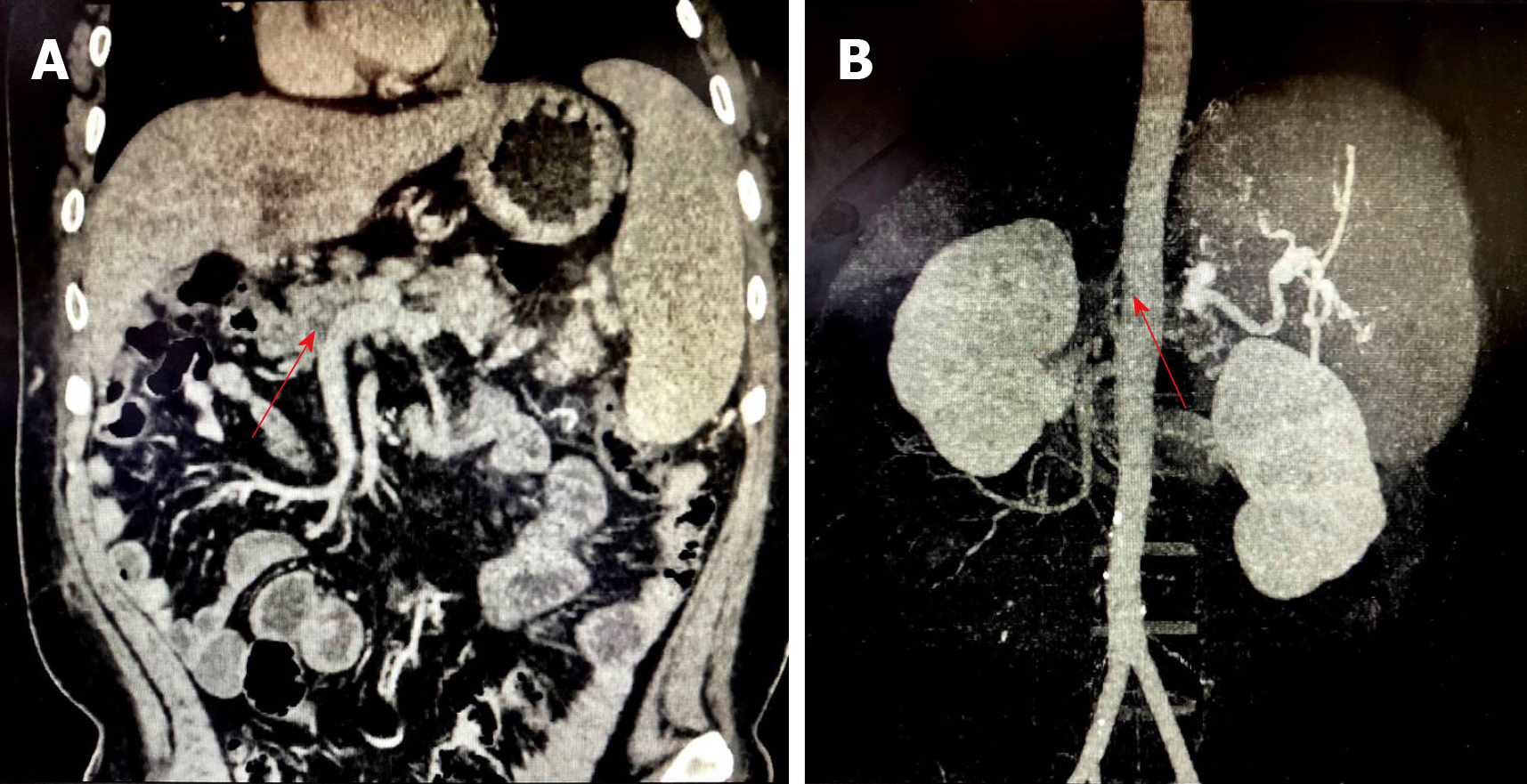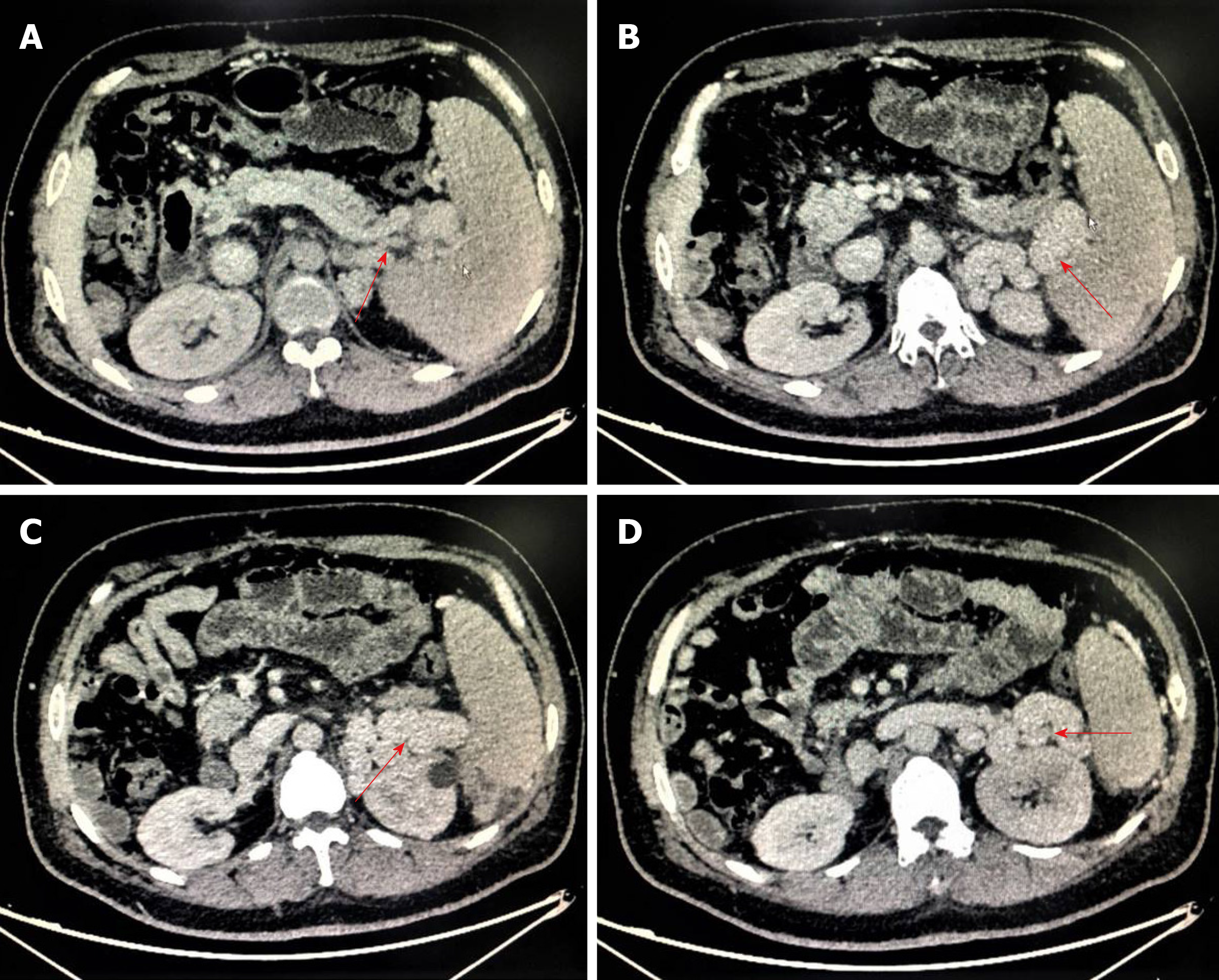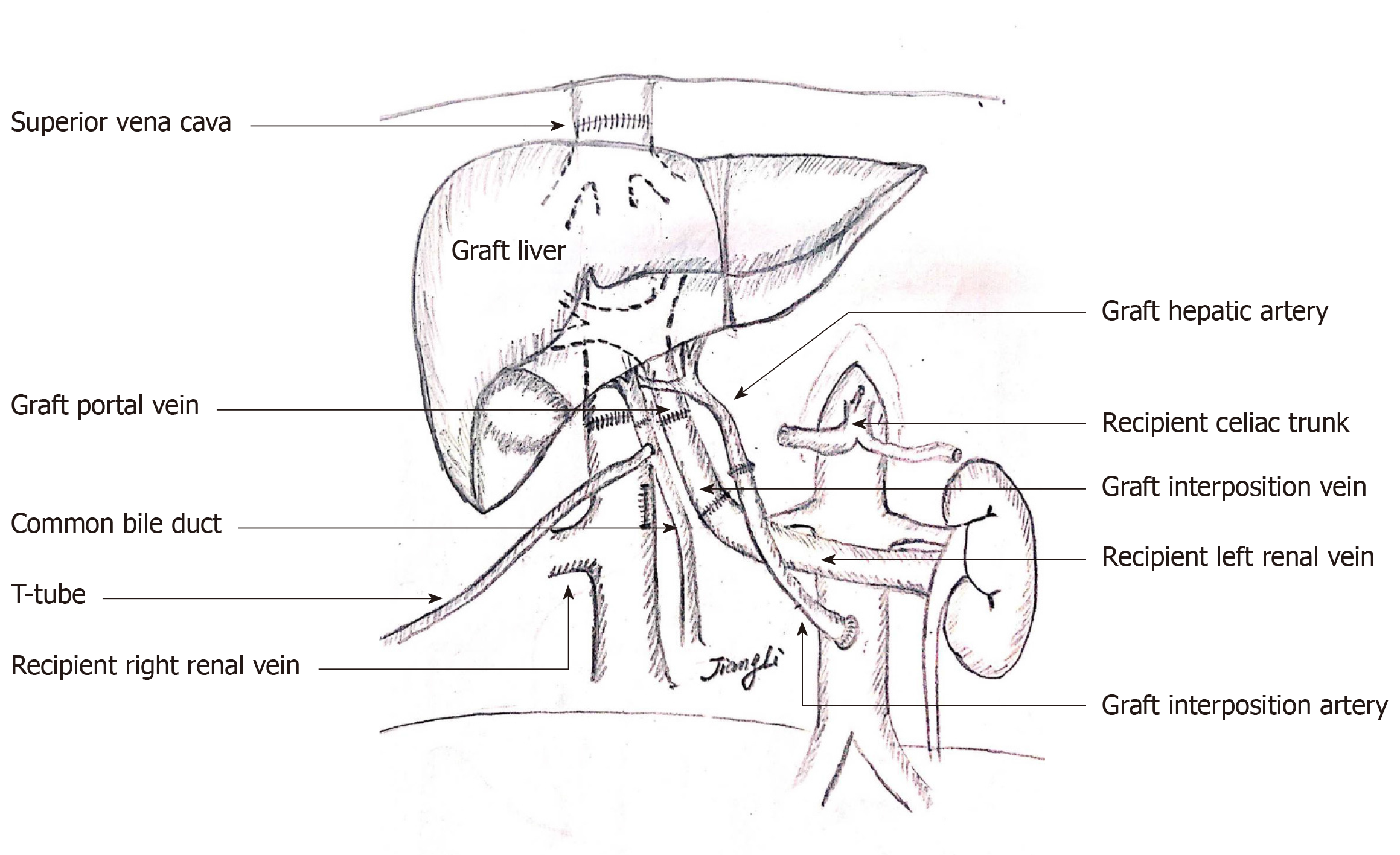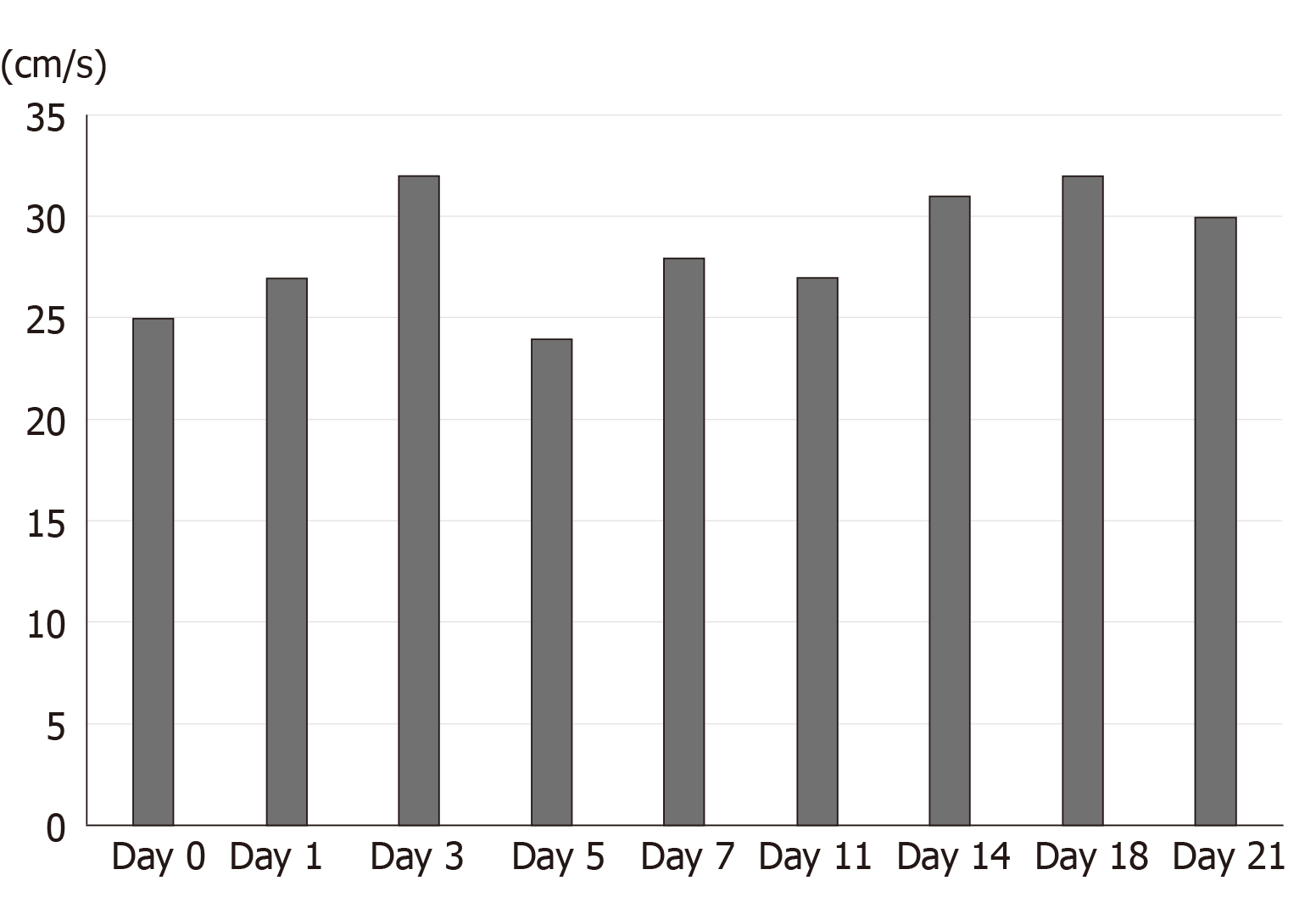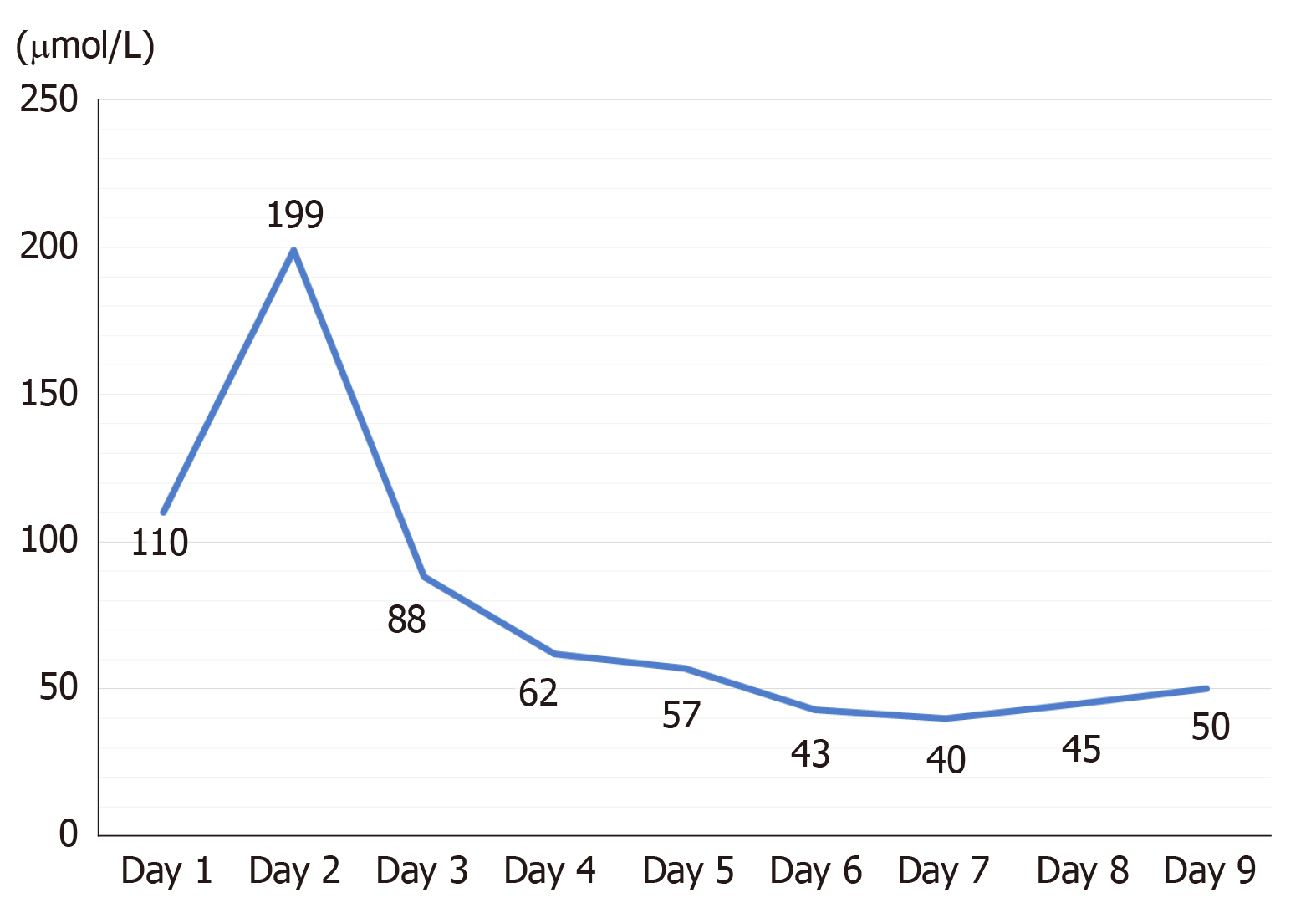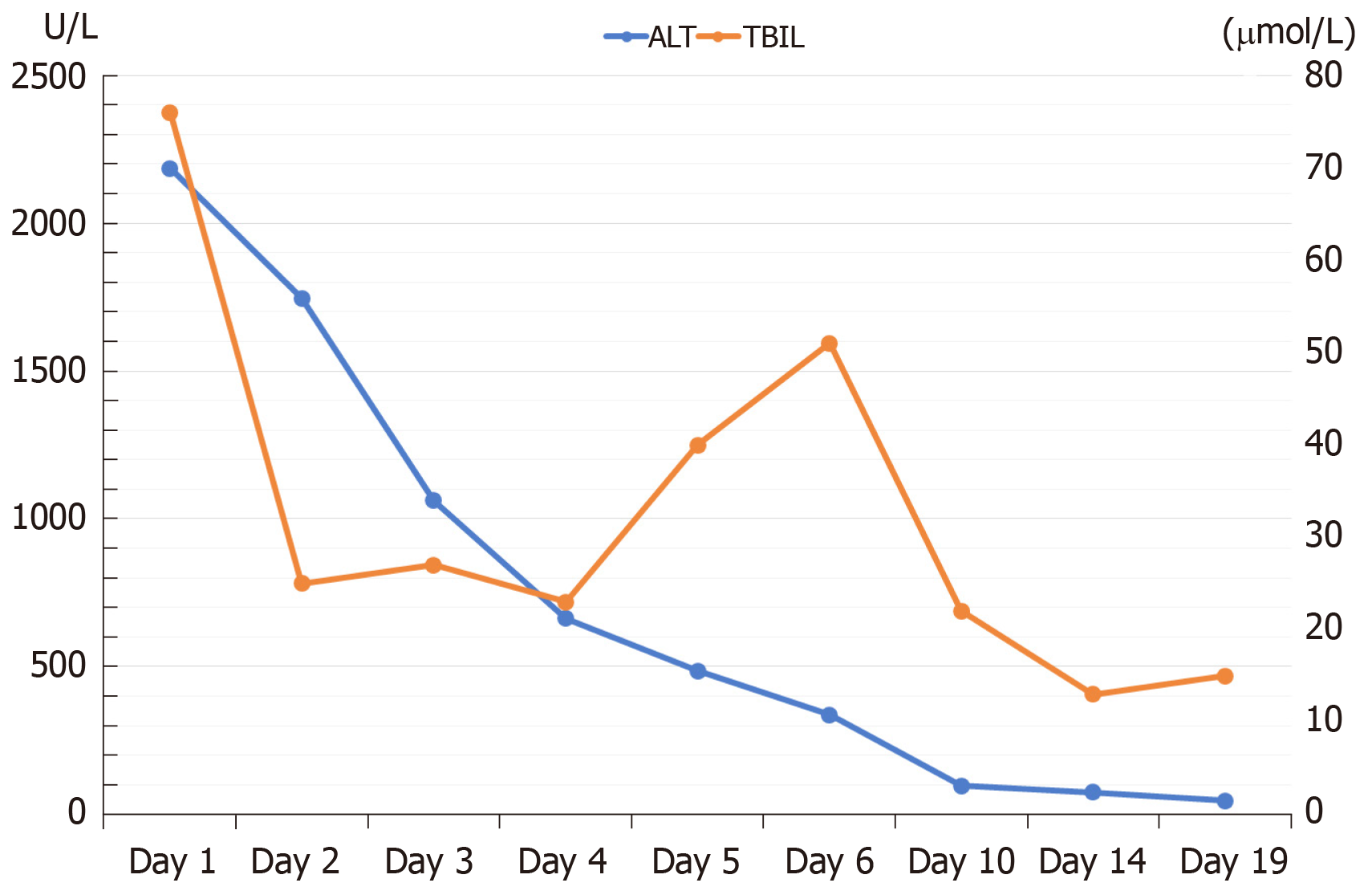Copyright
©The Author(s) 2020.
World J Clin Cases. Feb 6, 2020; 8(3): 568-576
Published online Feb 6, 2020. doi: 10.12998/wjcc.v8.i3.568
Published online Feb 6, 2020. doi: 10.12998/wjcc.v8.i3.568
Figure 1 Preoperative abdominal imaging of the patient.
A: From the 5th year after primary liver transplantation, abdominal enhanced computed tomography showed portal vein thrombosis with cavernous degeneration of the portal vein (red arrow); B: Abdominal enhanced computed tomography showed portal vein thrombosis with occlusion of the hepatic artery (red arrow).
Figure 2 Preoperative abdominal imaging suggests a significant spleno-renal shunt (red arrow).
Figure 3 Images of liver retransplantation during operation.
A: Graft portal vein was anastomosed to the recipient’s left renal vein using a free iliac vein graft in an end-to-end manner; B and C: Graft hepatic celiac artery was connected to the recipient’s abdominal aorta by the external iliac artery; D: Intraoperative image before abdominal closure.
Figure 4 Schematic diagram of surgical procedure.
Liver vena cava anastomosis was performed in an orthotopic cavo-caval manner; portal reconstruction was carried out by means of end-to-end anastomosis; graft portal vein was connected with the recipient’s left renal vein through an interposition vein, and the distal end of the left renal vein was sutured; the hepatic artery anastomosis was done between the donor celiac artery and the recipient’s infrarenal aorta through an interposition artery; and a bilio-biliary anastomosis was performed with a T-shaped drainage tube.
Figure 5 Changes of portal vein blood flow during and after retransplantation of the liver.
Figure 6 Renal function (serum creatinine) changes after retransplantation of the liver.
Figure 7 Preoperative and postoperative liver function in the patient with retransplantation of the liver.
- Citation: Li J, Guo QJ, Jiang WT, Zheng H, Shen ZY. Complex liver retransplantation to treat graft loss due to long-term biliary tract complication after liver transplantation: A case report. World J Clin Cases 2020; 8(3): 568-576
- URL: https://www.wjgnet.com/2307-8960/full/v8/i3/568.htm
- DOI: https://dx.doi.org/10.12998/wjcc.v8.i3.568









